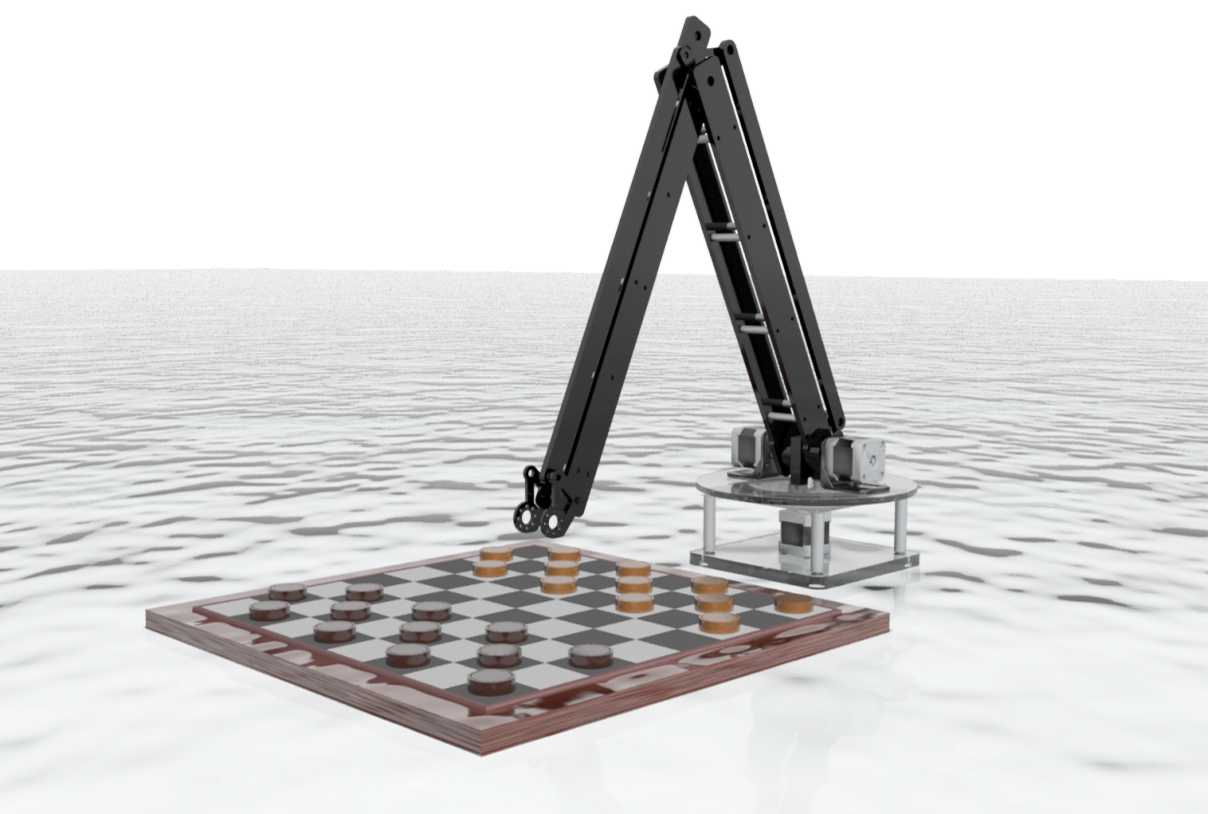
Specifications
-
The robotic arm can reach every piece on the game board to play checkers independently. A typical size of the game board is 0.41 m x 0.41 m; therefore the robotic arm needs to at least extend its arm to 0.57 m (length of the diagonal of the board) to make sure it can reach each piece on the board. Four degrees of freedom is our target value so that the arm can grab every piece on the board. The robotic arm also needs to support itself. Therefore, we set the target value for joint actuation torque to be 10 N-m.
-
The robotic arm needs to be portable. We set the limit value of the weight to be 2 kg so it can be carried and moved with ease. Our competitor, uArm, weighs approximately 2 kg. We aim for a lighter weight, using aluminum and eliminating unnecessary material, in order to make the robot easier to maneuver.
-
The robotic arm needs to place the checker pieces on the board accurately without user interaction. The robotic arm takes inputs from the camera seamlessly and determines the locations of the pieces and target positions. This requires a camera to be mounted on the top of the board. In order to make the whole set up portable, we plan to use light camera, with a mass less than 135 g (which is the mass of the popular wearable camera, the GoPro).
-
The movement of the robotic arm is efficient and does not interfere with users so that customers can play the game with the robot comfortably. The robotic arm needs to move efficiently and accurately while positioning itself in 3D space. This requires inverse kinematics incorporated into the control system.
-
The battery lasts long enough for the robotic arm to perform a full task (play the whole game). Casual games usually last 10 to 30 minutes. Therefore, the battery needs to last at least 40 min to meet this requirement.
-
The robotic arm can be controlled wirelessly and autonomously so that the customers can easily make adjustments to the robotic arm’s task. We expect the users to be close to the robotic arm since they will be playing the game together. Therefore we believe a WiFi/bluetooth range of 10 m is enough for this specification.
-
The robotic arm can respond to external disturbances to protect itself from damages. For example, if the customer grabs the robotic arm, the arm should resist the disturbance to avoid fracture.
-
The robotic hand will be modular and can be replaced easily for different tasks. Currently, we plan to make one standard gripper and one suction cup head. To achieve this customer specification, these “hands” need to be light so that their weight will not interfere with the movement of the robotic arm. We set the maximum weight of the gripper to be 60 g as our competitor, uArm, uses a gripper that weighs 58 g.
-
The robotic arm needs to adapt to various environments so that it does not require intensive initial calibration. Inverse kinematics is necessary for determining arm location and target location in 3D space.
-
The robot looks engaging and aesthetically pleasing so that customers enjoy interacting with it.

QFD chart for concept selection and specifications.